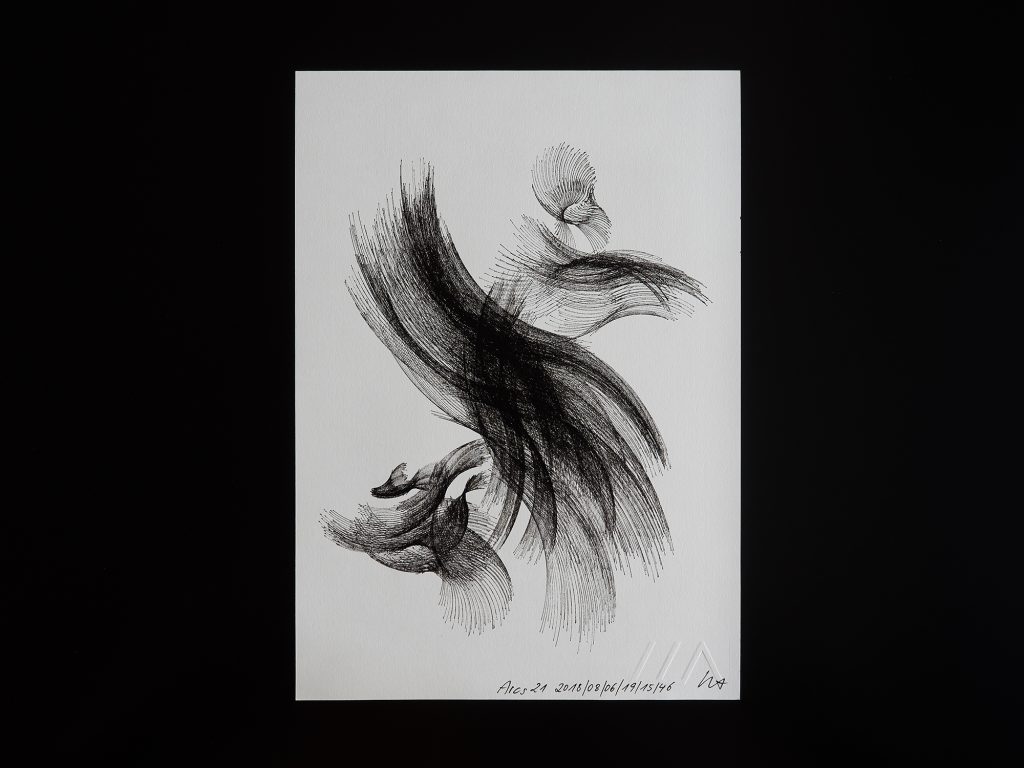By Ilia Urgen
“Distributed Consciousness” is a collection of 12 digital illustrations from 2021, created by Turkish-born visual artist Memo Akten. For reference, I have included 1 of his illustrations below.
Akten is an artist who’s constantly inspired by the natural environment around him and how human interactions connect with nature. The main subject of the 12 illustrations is an octopus, which Akten saw while snorkeling in the Mediterranean Sea.
I admire the depths of dimensions in his collection, along with the use of contrasting textures and vivid-bright colors, all while keeping an underwater theme. The soft, gentle eyes of the octopus makes the observer feel at ease, where they can picture themselves being underwater just like Akten was. I also admire the ombre-effect in the background, making the illustration even more welcoming.
This collection involved a combination of artist, artificial intelligence, and ecological awareness. Akten’s greater understanding of digital computation, the natural world, and environmental design is what draws any person to this work of art.

![[OLD SEMESTER] 15-104 • Introduction to Computing for Creative Practice](../../../../wp-content/uploads/2023/09/stop-banner.png)







